Description
THERAPEUTIC INDICATIONS:
Treatment of essential hypertension.
This fixed dose combination is indicated in patients whose blood pressure is not adequately controlled by captopril alone or hydrochlorothiazide alone.
POSOLOGY AND METHOD OF ADMINISTRATION:
Posology:
Angiopress Comp can be administered in a single or two divided doses/day with or without food in patients whose blood pressure is not adequately controlled by captopril alone or hydrochlorothiazide alone.
A maximum daily dose of 50 mg Captopril/25 mg hydrochlorothiazide should not be exceeded. If satisfactory reduction of blood pressure has not been achieved, additional antihypertensive medication may be added
Adults: the administration of the fixed combination of captopril and hydrochlorothiazide is usually recommended after dosage titration with the individual components. The usual maintenance dose is 50 mg/25 mg, once a day, in the morning. When clinically appropriate a direct change from monotherapy to the fixed combination may be considered.
Renal impairment: Creatinine clearance between 30 and 80 ml/min: the initial dose is usually 25 mg/12.5 mg once a day, in the morning.
The combination captopril/hydrochlorothiazide is contraindicated in patients with severe renal impairment (creatinine clearance < 30 ml/min).
Special populations: in salt/volume depleted patients, elderly patients, and diabetic patients, the usual starting dose is 25 mg/12.5 mg once a day.
Paediatric population: There is no relevant indication for use of Angiopress Comp in children.
Method of administration:
For oral use.
CONTRAINDICATIONS:
Hypersensitivity to the active substances or to any of the excipients or to any other ACE inhibitor or to any other sulphonamide-derived drug.
• History of angioedema associated with previous ACE inhibitor therapy.
• Hereditary/idiopathic angioneurotic oedema.
• Severe renal impairment (creatinine clearance < 30 ml/min).
• Severe hepatic impairment.
• Contraindicated during pregnancy.
• The concomitant use of Angiopress comp tablets with Aliskiren-containing products is contraindicated in patients with diabetes mellitus or renal impairment (GFR <60ml/min/1.73m²)
SPECIAL WARNINGS AND PRECAUTIONS:
CAPTOPRIL
Hypotension: rarely hypotension is observed in uncomplicated hypertensive patients.
Symptomatic hypotension is more likely to occur in hypertensive patients who are volume and/or sodium depleted by vigorous diuretic therapy, dietary salt restriction, diarrhoea, vomiting, or haemodialysis. Volume and/or sodium depletion should be corrected before the administration of an ACE inhibitor and a lower starting dose should be considered.
As with any antihypertensive agent, excessive blood pressure lowering in patients with ischaemic cardiovascular or cerebrovascular disease may increase the risk of myocardial infarction or stroke. If hypotension develops, the patient should be placed in a supine position. Volume repletion with intravenous normal saline may be required.
Renovascular hypertension: there is an increased risk of hypotension and renal insufficiency when patients with bilateral renal artery stenosis or stenosis of the artery to a single functioning kidney are treated with ACE inhibitors. Loss of renal function may occur with only mild changes in serum creatinine. In these patients, therapy should be initiated under close medical supervision with low doses, careful titration, and monitoring of renal function.
Angioedema: angioneurotic oedema of the face, extremities, lips, tongue, glottis and/or larynx has been reported in patients treated with angiotensin converting enzyme inhibitors, including Captopril. This may occur at any time during treatment. In such cases, Captopril should be discontinued promptly and appropriate monitoring should be instituted to ensure complete resolution of symptoms prior to dismissing the patient. In those instances where swelling has been confined to the face and lips the condition generally resolved without treatment, although antihistamines have been useful in relieving symptoms.
Angioneurotic oedema associated with laryngeal edema may be fatal. Where there is involvement of the tongue, glottis or larynx, likely to cause airway obstruction, appropriate therapy, which may include subcutaneous epinephrine solution 1:1000 (0.3 ml to 0.5 ml) and/or measures to ensure a patent airway, should be administered promptly.
Black patients receiving ACE inhibitors have been reported to have a higher incidence of angioedema compared to non-blacks.
Patients with a history of angioedema unrelated to ACE inhibitor therapy may be at increased risk of angioedema while receiving an ACE inhibitor.
Intestinal angioedema has been reported rarely in patients treated with ACE inhibitors. These patients presented with abdominal pain (with or without nausea or vomiting); in some cases there was no prior facial angioedema and C-1 esterase levels were normal. The angioedema was diagnosed by procedures including abdominal CT scan, or ultrasound or at surgery and symptoms resolved after stopping the ACE inhibitor. Intestinal angioedema should be included in the differential diagnosis of patients on ACE inhibitors presenting with abdominal pain.
Cough: cough has been reported with the use of ACE inhibitors. Characteristically, the cough is non-productive, persistent and resolves after discontinuation of therapy.
Dual blockade of the renin-angiotensin-aldosterone system (RAAS):
There is evidence that the concomitant use of ACE-inhibitors, angiotensin II receptor blockers or aliskiren increases the risk of hypotension, hyperkalaemia and decreased renal function (including acute renal failure). Dual blockade of RAAS through the combined use of ACE-inhibitors, angiotensin II receptor blockers or aliskiren is therefore not recommended.
If dual blockade therapy is considered absolutely necessary, this should only occur under specialist supervision and subject to frequent close monitoring of renal function, electrolytes and blood pressure. ACE-inhibitors and angiotensin II receptor blockers should not be used concomitantly in patients with diabetic nephropathy.
Hepatic failure: rarely, ACE inhibitors have been associated with a syndrome that starts with cholestatic jaundice and progresses to fulminant hepatic necrosis and (sometimes) death. The mechanism of this syndrome is not understood. Patients receiving ACE inhibitors who develop jaundice or marked elevations of hepatic enzymes should discontinue the ACE inhibitor and receive appropriate medical follow-up.
Hyperkalaemia: elevations in serum potassium have been observed in some patients treated with ACE inhibitors, including captopril. Patients at risk for the development of hyperkalaemia include those with renal insufficiency, diabetes mellitus, or those using concomitant potassium-sparing diuretics, potassium supplements or potassium-containing salt substitutes; or those patients taking other drugs associated with increases in serum potassium (e.g. heparin). If concomitant use of the above mentioned agents is deemed appropriate, regular monitoring of serum potassium is recommended.
Aortic and mitral valve stenosis/Obstructive hypertrophic cardiomyopathy/Cardiogenic shock:
ACE inhibitors should be used with caution in patients with left ventricular valvular and outflow tract obstruction and avoided in cases of cardiogenic shock and hemodynamically significant obstruction.
Neutropenia/Agranulocytosis: neutropenia/agranulocytosis, thrombocytopenia and anaemia have been reported in patients receiving ACE inhibitors, including captopril. In patients with normal renal function and no other complicating factors, neutropenia occurs rarely. Captopril should be used with extreme caution in patients with collagen vascular disease, immunosuppressant therapy, treatment with allopurinol or procainamide, or a combination of these complicating factors, especially if there is pre-existing impaired renal function. Some of these patients developed serious infections which in a few instances did not respond to intensive antibiotic therapy.
If captopril is used in such patients, it is advised that white blood cell count and differential counts should be performed prior to therapy, every 2 weeks during the first 3 months of captopril therapy, and periodically thereafter. During treatment all patients should be instructed to report any sign of infection (e.g. sore throat, fever) when a differential white blood cell count should be performed.
Captopril and other concomitant medication should be withdrawn if neutropenia (neutrophils less than 1000/mm3) is detected or suspected.
In most patients neutrophil counts rapidly return to normal upon discontinuing captopril.
Proteinuria: proteinuria may occur particularly in patients with existing renal function impairment or on relatively high doses of ACE inhibitors.
Total urinary proteins greater than 1 g per day were seen in about 0.7% of patients receiving captopril. The majority of patients had evidence of prior renal disease or had received relatively high doses of captopril (in excess of 150 mg/day), or both. Nephrotic syndrome occurred in about one-fifth of proteinuric patients. In most cases, proteinuria subsided or cleared within six months whether or not captopril was continued. Parameters of renal function, such as BUN and creatinine, were seldom altered in the patients with proteinuria.
Patients with prior renal disease should have urinary protein estimations (dip-stick on first morning urine) prior to treatment, and periodically thereafter.
Anaphylactoid reactions during desensitisation: sustained life-threatening anaphylactoid reactions have been rarely reported for patients undergoing desensitising treatment with hymenoptera venom while receiving another ACE inhibitor. In the same patients, these reactions were avoided when the ACE inhibitor was temporarily withheld, but they reappeared upon inadvertent rechallenge. Therefore, caution should be used in patients treated with ACE inhibitors undergoing such desensitisation procedures.
Anaphylactoid reactions during high-flux dialysis/lipoprotein apheresis membrane exposure: anaphylactoid reactions have been reported in patients haemodialysed with high-flux dialysis membranes or undergoing low-density lipoprotein apheresis with dextran sulphate absorption. In these patients, consideration should be given to using a different type of dialysis membrane or a different class of medication.
Surgery/Anaesthesia: hypotension may occur in patients undergoing major surgery or during treatment with anaesthetic agents that are known to lower blood pressure. If hypotension occurs, it may be corrected by volume expansion.
Diabetic patients: the glycaemia levels should be closely monitored in diabetic patients previously treated with oral antidiabetic drugs or insulin, namely during the first month of treatment with an ACE inhibitor.
As with other angiotensin converting enzyme inhibitors, Angiopress Comp is apparently less effective in lowering blood pressure in black people than in non-blacks, possibly because of higher prevalence of low-renin states in the black hypertensive population.
HYDROCHLOROTHIAZIDE
Renal impairment: in patients with renal disease, thiazides may precipitate azotaemia. Cumulative effects of the drug may develop in patients with impaired renal function. If progressive renal impairment becomes evident, as indicated by a rising non-protein nitrogen, careful reappraisal of therapy is necessary, with consideration given to discontinuing diuretic therapy.
Hepatic impairment: thiazides should be used with caution in patients with impaired hepatic function or progressive liver disease, since minor alterations of fluid and electrolyte balance may precipitate hepatic coma.
Metabolic and endocrine effects: thiazide therapy may impair glucose tolerance. In diabetic patients dosage adjustments of insulin or oral hypoglycaemic agents may be required. Latent diabetes mellitus may become manifest during thiazide therapy. Increases in cholesterol and triglyceride levels have been associated with thiazide diuretic therapy.
Hyperuricaemia may occur or frank gout may be precipitated in certain patients receiving thiazide therapy.
Electrolyte imbalance: as for any patient receiving diuretic therapy, periodic determination of serum electrolytes should be performed at appropriate intervals.
Thiazides, including hydrochlorothiazide, can cause fluid or electrolyte imbalance (hypokalaemia, hyponatraemia, and hypochloraemic alkalosis). Warning signs of fluid or electrolyte imbalance are dryness of mouth, thirst, weakness, lethargy, drowsiness, restlessness, muscle pain or cramps, muscular fatigue, hypotension, oliguria, tachycardia, and gastrointestinal disturbances such as nausea or vomiting.
Although hypokalaemia may develop with the use of thiazide diuretics, concurrent therapy with captopril may reduce diuretic-induced hypokalaemia. The risk of hypokalaemia is greatest in patients with cirrhosis of the liver, in patients experiencing brisk diuresis, in patients who are receiving inadequate oral intake of electrolytes and in patients receiving concomitant therapy with corticosteroids or ACTH.
Dilutional hyponatraemia may occur in oedematous patients in hot weather. Chloride deficit is generally mild and usually does not require treatment.
Thiazides may decrease urinary calcium excretion and cause an intermittent and slight elevation of serum calcium in the absence of known disorders of calcium metabolism. Marked hypercalcaemia may be evidence of hidden hyperparathyroidism. Thiazides should be discontinued before carrying out tests for parathyroid function.
Thiazides have been shown to increase the urinary excretion of magnesium, which may result in hypomagnesaemia.
Anti-doping test: hydrochlorothiazide contained in this medication could produce a positive analytic result in an anti-doping test.
Other: sensitivity reactions may occur in patients with or without a history of allergy or bronchial asthma. The possibility of exacerbation or activation of systemic lupus erythematosus has been reported.
Acute Myopia and Secondary Acute Angle-Closure Glaucoma: sulfonamide drugs or sulfonamide derivative drugs can cause an idiosyncratic reaction, resulting in transient myopia and acute angle-closure glaucoma. While hydrochlorothiazide is a sulfonamide, only isolated cases of acute angle-closure glaucoma without definite causal association have been reported so far with hydrochlorothiazide. Symptoms include acute onset of decreased visual acuity or ocular pain and typically occur within hours to weeks of drug initiation. Untreated acute angle-closure glaucoma can lead to permanent vision loss. The primary treatment is to discontinue drug intake as rapidly as possible. Prompt medical or surgical treatments may need to be considered if the intraocular pressure remains uncontrolled. Risk factors for developing acute angle-closure glaucoma may include a history of sulfonamide or penicillin allergy.
CAPTOPRIL/HYDROCHLOROTHIAZIDE COMBINATION
Pregnancy: Don't use this product during pregnancy, as it may cause injury or death of the developing fetus.
Risk of hypokalaemia: the combination of an ACE inhibitor with a thiazide diuretic does not rule out the occurrence of hypokalaemia. Regular monitoring of kalaemia should be performed.
Combination with lithium: Angiopress Comp is not recommended in association with lithium due to the potentiation of lithium toxicity.
Lactose: Patients with rare hereditary problems of galactose intolerance, the Lapp lactase deficiency or glucose-galactose malabsorption should not take this medicine.
INTERACTION WITH OTHER MEDICINAL PRODUCTS AND OTHER FORMS OF INTERACTION:
CAPTOPRIL
Potassium sparing diuretics or potassium supplements: ACE inhibitors attenuate diuretic induced potassium loss. Potassium sparing diuretics (e.g. spironolactone, triamterene, or amiloride), potassium supplements, or potassium-containing salt substitutes may lead to significant increases in serum potassium. If concomitant use is indicated because of demonstrated hypokalaemia they should be used with caution and with frequent monitoring of serum potassium.
Diuretics (thiazide or loop diuretics): prior treatment with high dose diuretics may result in volume depletion and a risk of hypotension when initiating therapy with captopril. The hypotensive effects can be reduced by discontinuation of the diuretic, by increasing volume or salt intake or by initiating therapy with a low dose of captopril. However, no clinically significant drug interactions have been found in specific studies with hydrochlorothiazide or furosemide.
Other antihypertensive agents: captopril has been safely co-administered with other commonly used antihypertensive agents (e.g. beta-blockers and long-acting calcium channel blockers). Concomitant use of these agents may increase the hypotensive effects of captopril. Treatment with nitroglycerine and other nitrates, or other vasodilators, should be used with caution.
Alpha blocking agents: concomitant use of alpha blocking agents may increase the antihypertensive effects of captopril and increase the risk of orthostatic hypotension.
Treatments of acute myocardial infarction: captopril may be used concomitantly with acetylsalicylic acid (at cardiologic doses), thrombolytics, beta-blockers and/or nitrates in patients with myocardial infarction.
Tricyclic antidepressants/Antipsychotics: ACE inhibitors may enhance the hypotensive effects of certain tricyclic antidepressants and antipsychotics. Postural hypotension may occur.
Allopurinol, procainamide, cytostatic or immunosuppressive agents: concomitant administration with ACE inhibitors may lead to an increased risk for leucopenia especially when the latter are used at higher than currently recommended doses.
Sympathomimetics: may reduce the antihypertensive effects of ACE inhibitors; patients should be carefully monitored.
Antidiabetics: pharmacological studies have shown that ACE inhibitors, including captopril, can potentiate the blood glucose-reducing effects of insulin and oral antidiabetics such as sulphonylurea in diabetics. Should this very rare interaction occur, it may be necessary to reduce the dose of the antidiabetic during simultaneous treatment with ACE inhibitors.
HYDROCHLOROTHIAZIDE
Amphotericin B (parenteral), carbenoxolone, corticosteroids, corticotropin (ACTH) or stimulant laxatives:hydrochlorothiazide may intensify electrolyte imbalance, particularly hypokalaemia.
Calcium salts: increased serum calcium levels due to decreased excretion may occur when administered concurrently with thiazide diuretics.
Cardiac glycosides: enhanced possibility of digitalis toxicity associated with thiazide induced hypokalaemia.
Cholestyramine resin and colestipol: may delay or decrease absorption of hydrochlorothiazide. Sulphonamide diuretics should be taken at least one hour before or four to six hours after these medications.
Nondepolarising muscle relaxants (e.g. tubocurarine chloride): effects of these agents may be potentiated by hydrochlorothiazide.
Drugs associated with torsades de pointes: because of the risk of hypokalaemia, caution should be used when hydrochlorothiazide is coadministered with drugs associated with torsades de pointes, e.g. some antiarrhythmics, some antipsychotics and other drugs known to induce torsades de pointes.
Carbamazepine: concomitant use of carbamazepine and hydrochlorothiazide has been associated with the risk of symptomatic hyponatraemia. Electrolytes should be monitored during concomitant use. If possible, another class of diuretics should be used.
CAPTOPRIL/HYDROCHLOROTHIAZIDE COMBINATION
Lithium: reversible increases in serum lithium concentrations and toxicity have been reported during concomitant administration of lithium with ACE inhibitors. Concomitant use of thiazide diuretics may increase the risk of lithium toxicity and enhance the already increased risk of lithium toxicity with ACE inhibitors. The combination of captopril and hydrochlorothiazide with lithium is therefore not recommended and careful monitoring of serum lithium levels should be performed if the combination proves necessary.
Non-steroidal anti-inflammatory medicinal products: it has been described that non-steroidal antiinflammatory medicinal products (NSAIDs) and ACE inhibitors exert an additive effect on the increase in serum potassium, whereas renal function may decrease. These effects are, in principle, reversible. Rarely, acute renal failure may occur, particularly in patients with compromised renal function such as the elderly or dehydrated. Chronic administration of NSAIDs may reduce the antihypertensive effect of an ACE inhibitor. The administration of NSAIDs may reduce the diuretic, natriuretic and antihypertensive effects of thiazide diuretics.
Clinical Chemistry
Captopril may cause a false-positive urine test for acetone. Hydrochlorothiazide may cause diagnostic interference of the bentiromide test. Thiazides may decrease serum PBI (Protein Bound Iodine) levels without signs of thyroid disturbance.
PREGNANCY AND LACTATION:
Pregnancy:
ACE-inhibitors:
Don't use this product during pregnancy, as it may cause injury or death of the developing fetus.
Hydrochlorothiazide: There is limited experience with hydrochlorothiazide during pregnancy, especially during the first trimester. Animal studies are insufficient.
Hydrochlorothiazide crosses the placenta. Based on the pharmacological mechanism of action of hydrochlorothiazide its use during the second and third trimester may compromise foeto-placental perfusion and may cause foetal and neonatal effects like icterus, disturbance of electrolyte balance and thrombocytopenia.
Hydrochlorothiazide should not be used for gestational oedema, gestational hypertension or preeclampsia due to the risk of decreased plasma volume and placental hypoperfusion, without a beneficial effect on the course of the disease.
Hydrochlorothiazide should not be used for essential hypertension in pregnant women except in rare situations where no other treatment could be used.
Lactation:
Captopril: Limited pharmacokinetic data demonstrate very low concentrations in breast milk. Although these concentrations seem to be clinically irrelevant, the use of Angiopress Comp in breastfeeding is not recommended for preterm infants and for the first few weeks after delivery, because of the hypothetical risk of cardiovascular and renal effects and because there is not enough clinical experience.
In the case of an older infant, the use of Angiopress Comp in a breast-feeding mother may be considered if this treatment is necessary for the mother and the child is observed for any adverse effect.
Hydrochlorothiazide: Hydrochlorothiazide is excreted in human milk in small amounts. Thiazides in high doses causing intense diuresis can inhibit the milk production. The use of Angiopress Comp during breast feeding is not recommended. If Angiopress Comp is used during breast feeding, doses should be kept as low as possible.
EFFECTS ON ABILITY TO DRIVE AND USE MACHINES:
As with other antihypertensives, the ability to drive and use machines may be reduced, e.g. at the start of the treatment or when the dose is modified, and also when used in combination with alcohol, but these effects depend on the individual's susceptibility.
UNDESIRABLE EFFECTS:
Frequency is defined using the following convention: common (> 1/100, < 1/10), uncommon (> 1/1,000, < 1/100), rare (> 1/10,000, < 1/1,000) and very rare (< 1/10,000).
CAPTOPRIL
Undesirable effects reported for captopril and/or ACE inhibitor therapy include:
Blood and lymphatic system disorders:
Very rare: neutropenia/agranulocytosis, pancytopenia particularly in patients with renal dysfunction, anaemia (including aplastic and haemolytic), thrombocytopenia, lymphadenopathy, eosinophilia, auto-immune diseases and/or positive ANA-titres.
Metabolism and nutrition disorders:
Rare: anorexia
Very rare: hyperkalaemia, hypoglycaemia
Psychiatric disorders:
Common: sleep disorders
Very rare: confusion, depression.
Nervous system disorders:
Common: taste impairment, dizziness.
Rare: drowsiness, headache and paraesthesia.
Very rare: cerebrovascular incidents, including stroke, and syncope.
Eye disorders:
Very rare: blurred vision.
Cardiac disorders:
Uncommon: tachycardia or tachyarrhythmia, angina pectoris, palpitations.
Very rare: cardiac arrest, cardiogenic shock.
Vascular disorders:
Uncommon: hypotension, Raynaud syndrome, flush, pallor.
Respiratory, thoracic and mediastinal disorders:
Common: dry, irritating (non-productive) cough and dyspnoea.
Very rare: bronchospasm, rhinitis, allergic alveolitis/eosinophilic pneumonia.
Gastrointestinal disorders:
Common: nausea, vomiting, gastric irritations, abdominal pain, diarrhoea, constipation, dry mouth.
Rare: stomatitis/aphthous ulcerations, intestinal angioedema.
Very rare: glossitis, peptic ulcer, pancreatitis.
Hepatobiliary disorders:
Very rare: impaired hepatic function and cholestasis (including jaundice), hepatitis including necrosis, elevated liver enzymes and bilirubin.
Skin and subcutaneous tissue disorders:
Common: pruritus with or without a rash, rash, and alopecia.
Uncommon: angioedema.
Very rare: urticaria, Stevens Johnson syndrome, erythema multiforme, photo-sensitivity, erythroderma, pemphigoid reactions and exfoliative dermatitis.
Musculoskeletal and connective tissue disorders:
Very rare: myalgia, arthralgia.
Renal and urinary disorders:
Rare: renal function disorders including renal failure, polyuria, oliguria, increased urine frequency
Very rare: nephrotic syndrome.
Reproductive system and breast disorders:
Very rare: impotence, gynaecomastia.
General disorders and administration site conditions:
Uncommon: chest pain, fatigue, malaise
Very rare: fever.
Investigations:
Very rare: proteinuria, eosinophilia, increase of serum potassium, decrease of serum sodium, elevation of BUN, serum creatinine and serum bilirubin, decreases in haemoglobin, haematocrit, leucocytes, thrombocytes, positive ANA-titre, elevated ESR.
HYDROCHLOROTHIAZIDE
Infections and infestations:
sialadenitis.
Blood and lymphatic system disorders:
leucopenia, neutropenia/agranulocytosis, thrombocytopenia, aplastic anaemia, haemolytic anaemia, bone marrow depression.
Metabolism and nutrition disorders:
anorexia, hyperglycaemia, glycosuria, hyperuricaemia, electrolyte imbalance (including hyponatraemia and hypokalaemia), increases in cholesterol and triglycerides.
Psychiatric disorders:
restlessness, depression, sleep disturbances.
Nervous system disorders:
loss of appetite, paraesthesia, light-headedness.
Eye disorders:
xanthopsia, transient blurred vision, acute myopia and secondary acute angle-closure glaucoma.
Ear and labyrinth disorders:
vertigo.
Cardiac disorders:
postural hypotension, cardiac arrhythmias.
Vascular disorders:
necrotising angiitis (vasculitis, cutaneous vasculitis).
Respiratory, thoracic and mediastinal disorders:
respiratory distress (including pneumonitis and pulmonary oedema).
Gastrointestinal disorders:
gastric irritation, diarrhoea, constipation, pancreatitis.
Hepatobiliary disorders:
jaundice (intrahepatic cholestatic jaundice).
Skin and subcutaneous tissue disorders:
photosensitivity reactions, rash, cutaneous lupus erythematosus-like reactions, reactivation of cutaneous lupus erythematosus, urticaria, anaphylactic reactions, toxic epidermal necrolysis.
Musculoskeletal and connective tissue disorders:
muscle spasm.
Renal and urinary disorders:
renal dysfunction, interstitial nephritis.
General disorders and administration site conditions:
fever, weakness.
OVERDOSE:
Symptoms of overdosage are: increased diuresis, electrolyte imbalance, severe hypotension, depression of consciousness (including coma), convulsions, paresis, cardiac arrhythmias, bradycardia and renal failure.
Measures to prevent absorption (e.g. gastric lavage, administration of absorbing agents and sodium sulfate within 30 minutes after intake) and hasten elimination should be applied if ingestion is recent. If hypotension occurs, the patient should be placed in the shock position and sodium chloride and volume supplementation should be given rapidly. Treatment with angiotensin-II can be considered. Bradycardia or extensive vagal reactions should be treated by administering atropine. The use of a pacemaker may be considered. Constant monitoring of water, electrolyte and acid base balance, blood glucose is essential. In case of hypokalaemia, potassium substitution is necessary.
Captopril may be removed from circulation by haemodialysis. The degree to which hydrochlorothiazide is removed by haemodialysis has not been established.
PHARMACOLOGICAL PROPERTIES:
Pharmacodynamic properties:
Pharmacotherapeutic group: captopril and diuretics.
Angiopress Comp is a combination of an ACE inhibitor, captopril, and an antihypertensive diuretic, hydrochlorothiazide. The combination of these agents has an additive antihypertensive effect, reducing blood pressure to a greater degree than either component alone.
- Captopril is an angiotensin converting enzyme (ACE) inhibitor, i.e. it inhibits ACE, the enzyme involved in the conversion of angiotensin I to angiotensin II - a vasoconstrictor which also stimulates aldosterone secretion by the adrenal cortex.
Such inhibition leads to:
- Reduced aldosterone secretion,
- Increased plasma renin activity, since aldosterone no longer exerts negative feedback,
- A drop in total peripheral resistance (with a preferential effect on muscles and kidneys) which is not accompanied by water and sodium retention or reflex tachycardia during long-term treatment.
Captopril also exerts its antihypertensive effect in subjects with low or normal renin concentrations.
Captopril is effective at all stages of hypertension, i.e. mild, moderate or severe. A reduction in supine and standing systolic and diastolic blood pressures is observed.
After a single dose, the antihypertensive effect is evident fifteen minutes post-dose and reaches a maximum between 1 h and 1.5 h after administration of the drug. Its duration of action is dose-dependent and varies from 6 to 12 hours.
Blood pressure becomes normalised (seated DBP < 90 mmHg) in patients after two weeks to one month of treatment and the drug retains its effectiveness over the course of time. Patients are also classified as responders if seated DBP decreased by 10% or more from baseline-BP.
Rebound hypertension does not occur when treatment is discontinued.
The treatment of hypertension with captopril leads to an increase in arterial compliance, a rise in renal blood flow without any significant drop in the glomerular filtration rate, and a decrease in left ventricular hypertrophy.
- Hydrochlorothiazide is a thiazide diuretic which acts by inhibiting the reabsorption of sodium in the cortical diluting segment of renal tubules. It increases the excretion of sodium and chloride in urine and, to a lesser extent, the excretion of potassium and magnesium, thereby increasing urinary output and exerting an antihypertensive effect.
The time to onset of diuretic activity is approximately 2 hours. Diuretic activity reaches a peak after 4 hours and is maintained for 6 to 12 hours. Above a certain dose, thiazide diuretics reach a plateau in terms of therapeutic effect whereas adverse reactions continue to multiply. When treatment is ineffective, increasing the dose beyond recommended doses serves no useful purpose and often gives rise to adverse reactions.
- The concomitant administration of captopril and hydrochlorothiazide in clinical trials led to greater reductions in blood pressure than when either of the products was administered alone.
The administration of captopril inhibits the renin angiotensin aldosterone system and tends to reduce hydrochlorothiazide-induced potassium loss.
Combination of an ACE inhibitor with a thiazide diuretic produces a synergistic effect and also lessens the risk of hypokalaemia provoked by the diuretic alone.
Pharmacokinetic properties:
Captopril is quickly absorbed after oral administration and maximum serum concentrations are obtained around one hour after administration. Minimum mean absorption is approximately 75%. Peak plasma concentrations are reached within 60-90 minutes. The presence of food in the gastrointestinal tract reduces absorption by about 30-40%. Approximately 25-30% of the circulating drug is bound to plasma proteins. The apparent elimination half-life of unchanged captopril in blood is about 2 hours.
Greater than 95% of the absorbed dose is eliminated in the urine within 24 hours; 40-50% is unchanged drug and the remainder are inactive disulphide metabolites (captopril disulphide and captopril cysteine disulphide). Impaired renal function could result in drug accumulation.
Oral absorption of hydrochlorothiazide is relatively rapid. The mean plasma half-life in fasted individuals has been reported to be 5 to 15 hours. Hydrochlorothiazide is eliminated rapidly by the kidney, and excreted unchanged (> 95%) in the urine.
PACKING: A carton box containing 30 tablets in 3 Al/PVC strips and a pamphlet enclosed.
STORAGE:
Keep at a temperature not exceeding 30C, in dry place.
Keep out of reach of children.
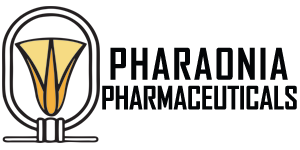

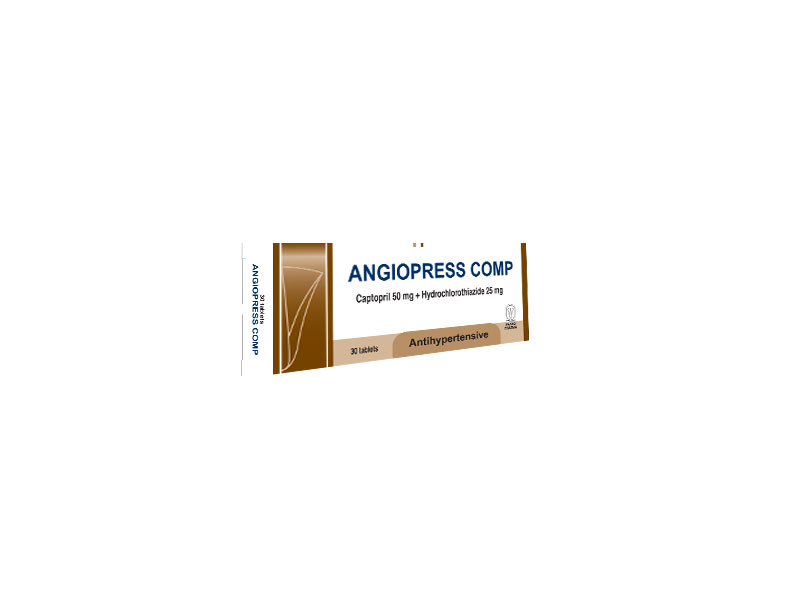

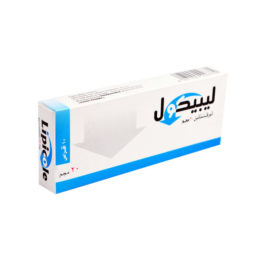

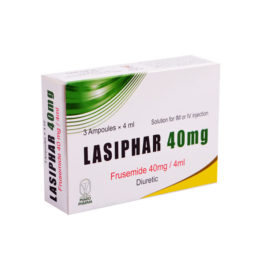


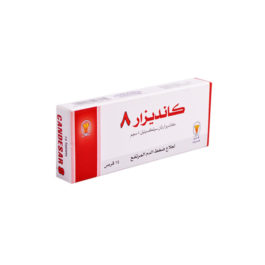
Reviews
There are no reviews yet.